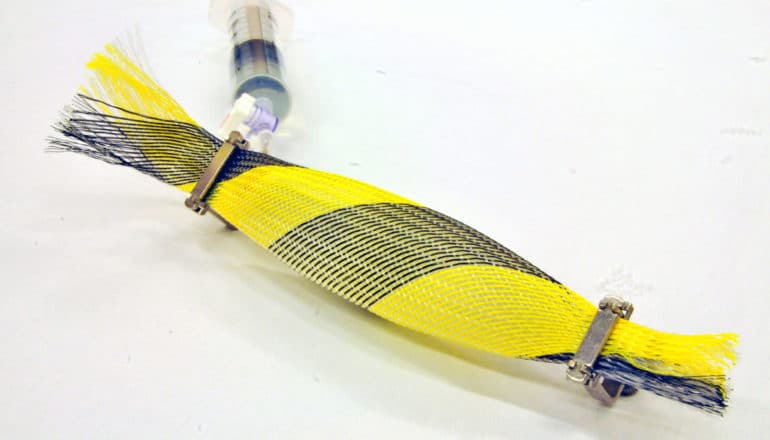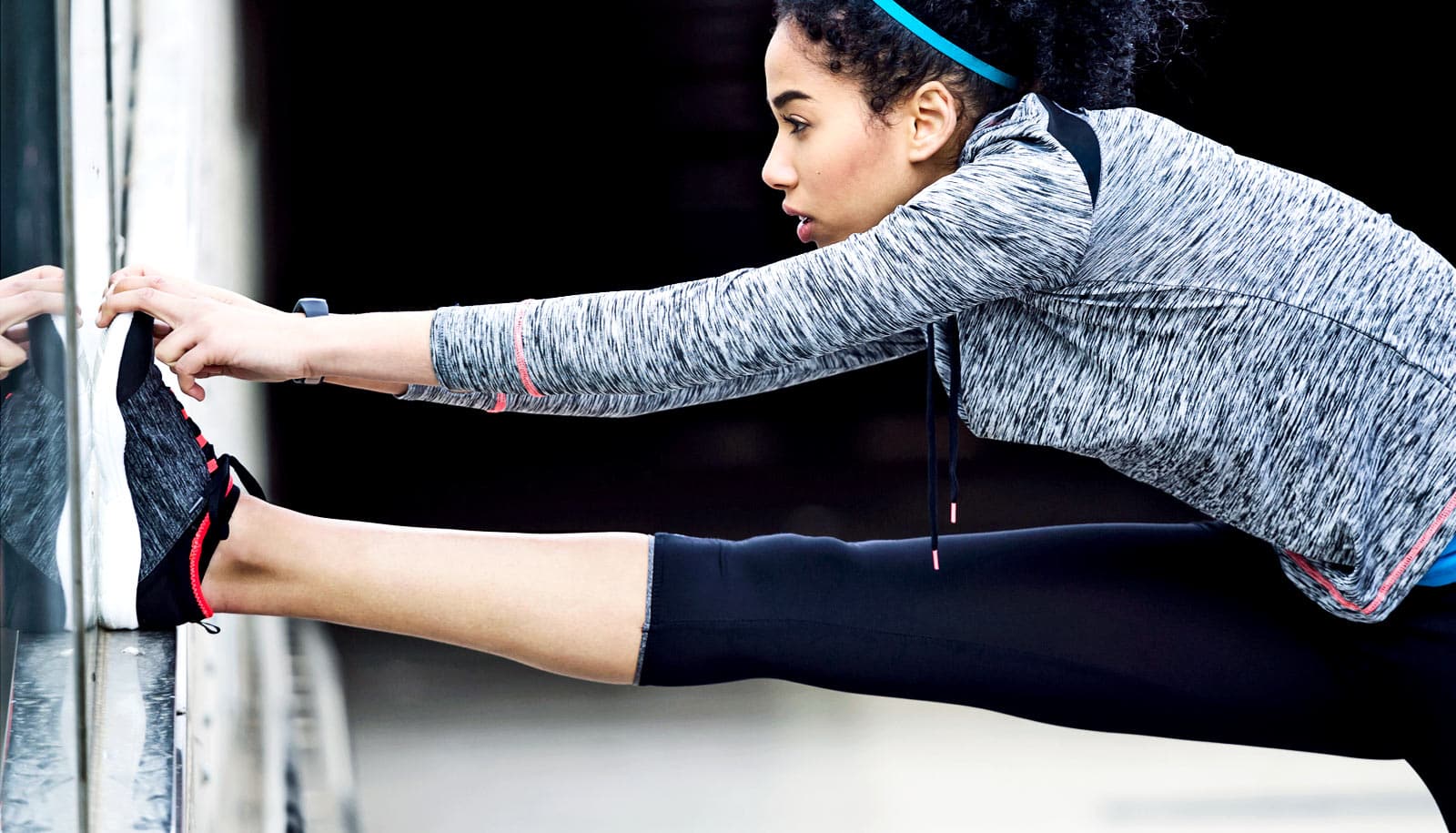Fluid is a previously unacknowledged source of the tension we feel when we stretch our muscles, research suggests.
In every animal, including humans, each muscle fiber is both filled with incompressible fluid and sheathed in a winding mesh of collagen connective tissue. When a muscle stretches in length, the surrounding mesh lengthens and becomes narrower in diameter.
What follows is like what happens in one of those woven “finger trap” toys, reports Brown University doctoral student David Sleboda, lead author of the study published in Biology Letters. Just like the toy squeezes your sheathed fingers when you stretch it far enough, the collagen mesh eventually squeezes down on the muscle fiber. Because the fiber is full of incompressible fluid, Sleboda discovered, its volume pushes back against the narrowing mesh, creating a tension that makes further stretch much more difficult.
“The fundamental problem here is a conflict of volumes,” Sleboda says. “The mesh sleeve can change volume but the fiber is a constant volume. Eventually the two are going to run into each other, and that’s where you see the tension really shoot up.”

Other previously posited factors also contribute to the tension you feel when you stretch, Sleboda acknowledges. One is tension created by kinks in the collagen mesh itself, and another is a stretchy protein in muscle fibers called titin. But the fluid-filled nature of muscle fibers appears to play a role, too.
Condom + Techflex
Sleboda works in the lab of study coauthor Thomas Roberts, a professor of ecology and evolutionary biology who studies muscle structure and performance. Sleboda was looking at electron microscope pictures of animal muscle fibers and their collagen sheaths and decided to build a simple model himself.
Stretchy material heals itself and twitches like muscle
Materials for Sleboda’s model weren’t hard to come by. The collagen mesh is well simulated by Techflex braided sheathing (typically used to neatly bundle computer cables together), and the muscle fiber could be made from a water-filled condom bought at the corner drug store.
The model revealed that the fluid played a significant role in the mechanical properties of the muscle—the resistance of the water-filled condom made the Techflex harder to stretch. Scientists have rarely modeled muscle mechanics to account for fluid in the fibers, Sleboda says. They had largely assumed that the fluid played only a chemical role within cells.
Bullfrog muscle
But did Sleboda’s model say anything meaningful about actual physiology? He conducted experiments to find out. In the study, Sleboda and Roberts report careful measurements of lengthwise stretch and the resulting tension in not only the model, but also in real bullfrog muscle as they varied the amounts of fluid in the muscle fibers (and the condoms).
You’ll lose muscle if you sit for two weeks
The model and the real muscle both displayed the same characteristic curve in their plots: The more fluid volume in the muscle fibers, the more tension for a given length of stretch. The fluid makes a specific, measurable, mechanical difference.
“We could get the exact same behavior using just a simple model,” Sleboda says. “Our study provides the first empirical evidence of fluid influencing muscle tension.”
Sleboda says his findings argue for accounting for fluid in models of muscle mechanics. For example, after exercise, muscle fibers appear to take on more fluid. Adding fluid’s effects to models of muscle behavior could then improve understanding of how muscles behave after exercise.
There are also medical conditions that affect how the collagen mesh is structured or performs, Sleboda says. Knowing how it interacts with fluid-filled muscle fibers could also prove important in future research.
Studies in other areas of animal physiology provide a ready-made roadmap, in fact, because fiber-reinforced fluid cavities, called “hydrostatic skeletons” are common structural elements in some organisms, Sleboda says.
The National Institutes of Health funded the study.
Source: Brown University



